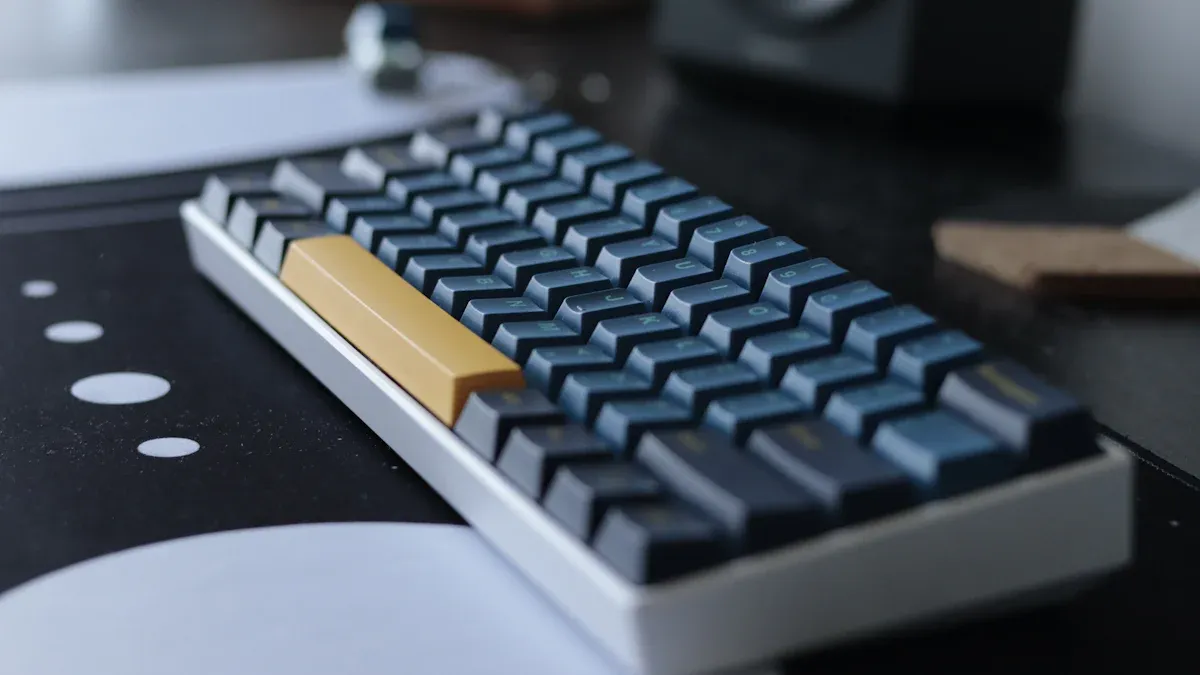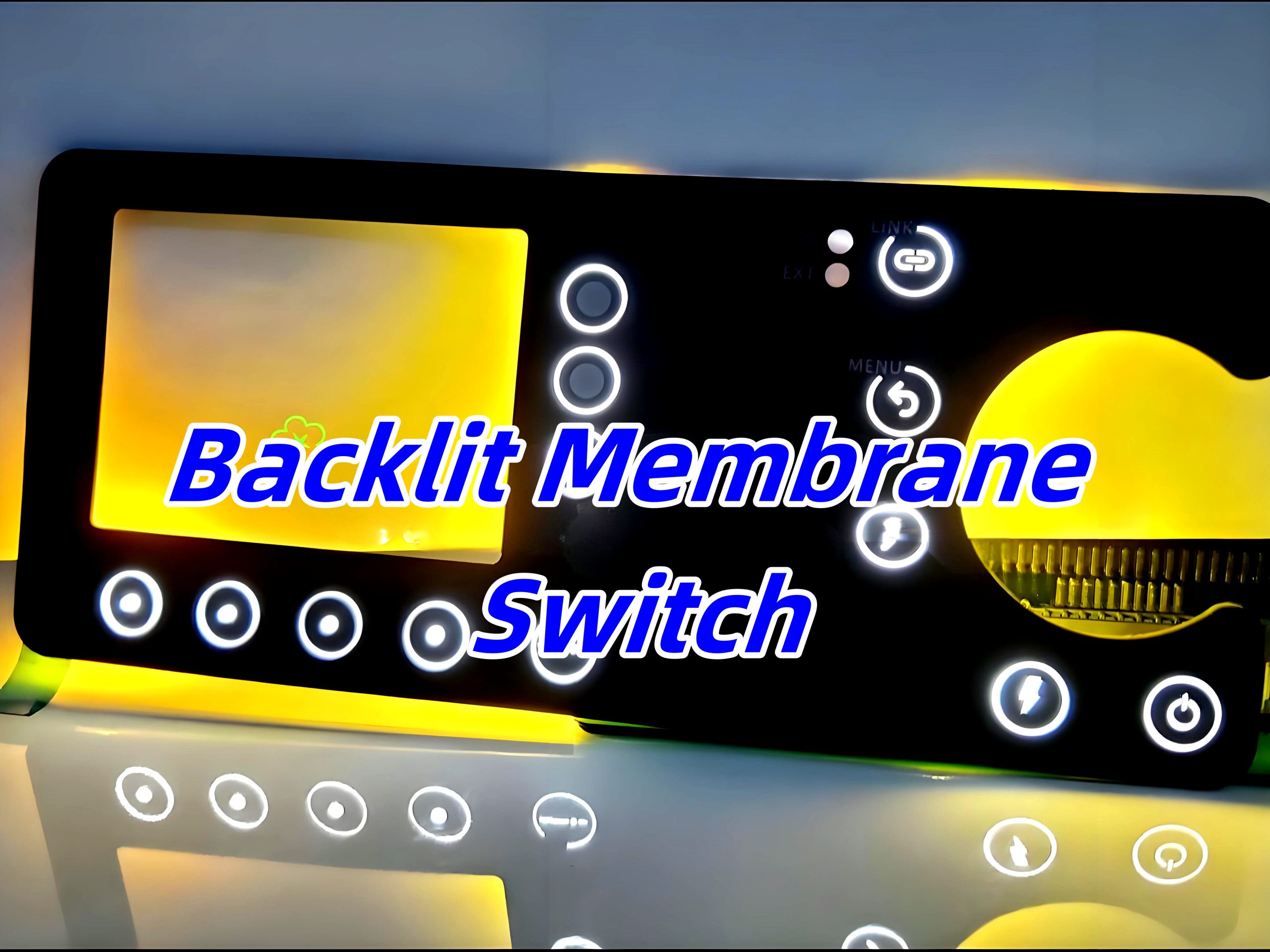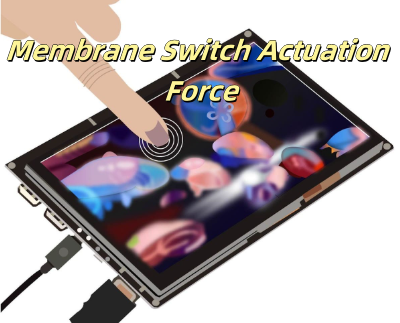
Key Factors to Evaluate When Choosing a Membrane Switch
Key Factors to Evaluate When Choosing a Membrane Switch
Picking the correct membrane switch is very important. It affects how well your equipment works and lasts. A good switch handles damage and improves user experience. If you work in tough places or need accuracy, the right choice matters. By thinking about your needs, you can make it last longer and work better.
Key Takeaways
- Pick a strong membrane switch so your equipment lasts longer and works well in hard conditions.
- Adjust your switch to match your device exactly, improving ease of use and user satisfaction.
- Think about the price of the switch; spending on good quality can save repair costs later.
- Make sure it works with your equipment by checking details like voltage and connector types.
- Try out the switch before choosing it to prevent problems and confirm it suits your needs.
Understanding Membrane Switches
Definition and Functionality
Membrane switches are thin, bendable panels used to control devices. They connect users to machines, making it easy to give commands. These switches work by pressing to activate circuits, so they respond quickly. They are often used in small devices because their slim design saves space but still works well.
The main job of membrane switches is to make using machines simple and reliable. They help you communicate with equipment, whether by pressing buttons or giving detailed commands. Their flexibility makes them useful in many fields, like medical tools and gadgets for everyday use.
Components of Membrane Switches
A membrane switch has several layers, each with a job to do. The top layer, called the graphic overlay, shows the buttons you press. Below that is the spacer layer, which keeps the circuits apart. When you press a button, the spacer pushes down, letting the circuits touch and send a signal.
Other important parts include adhesive layers that hold everything together and conductive traces that carry signals. Some switches also have tactile domes, which give a click feeling when pressed. All these parts work together to make the switch easy and reliable to use.
Advantages of Membrane Switches in Equipment
Membrane switches have many benefits that improve how machines work. They are strong and can handle tough conditions like water, dust, and chemicals. This makes them great for factories and outdoor use. You can also customise them to fit your needs, making them easier to use.
Another benefit is that they are easy to clean. Their smooth surface stops dirt from building up, which is important for medical and food equipment. They last a long time and need little care, making them a smart and affordable choice.
Tip: Think about durability, customisation, and how well they fit your equipment when choosing membrane switches to get the most out of them.
Evaluating Key Factors in Membrane Switch Selection
Durability and Environmental Resistance
When picking a membrane switch, think about how strong it is. A strong switch keeps your equipment working well for a long time. These switches are made to handle tough conditions like water, dust, or chemicals. For example, if you work outside or in a factory, you need a switch that can handle these challenges without breaking.
Also, check the temperatures the switch can handle. Some switches work in very hot or cold places, which is important for cars or planes. Choosing a switch that resists harsh environments helps prevent problems and makes your equipment last longer.
Tip: Look at details like water resistance, chemical resistance, and temperature limits before deciding.
Customisation Options for Design and Functionality
Customising your switch is another important thing to think about. A custom switch lets you change its size, shape, and button layout. This makes sure it fits your equipment perfectly and works better.
You can also add features like lights, clicky buttons, or printed designs. For example, lights help you see buttons in the dark, and clicky buttons feel nice to press. These changes make the switch easier to use and more user-friendly.
Note: A good design can make your equipment look better and easier to use.
Cost and Budget Considerations
The price of the switch is also important. Membrane switches are usually affordable, but don’t pick the cheapest one. Cheap switches might break faster or cost more to fix later.
Think about the cost of adding extra features too. Things like lights or fancy designs might cost more but are worth it in the long run. Spending on a good-quality switch saves money by lasting longer and working better.
Tip: Work with a reliable maker to find the best mix of price and quality. This way, you get the most for your money.
Compatibility with Equipment and Systems
When picking membrane switches, make sure they match your equipment. If they don’t, your devices might not work or could get damaged. First, check your equipment’s technical details. Look at things like voltage, connector types, and circuit needs. These details show if the switch will work properly.
Think about how the switch connects to your system. Some systems need special ways to communicate or take inputs. For example, if your device uses USB, the switch must support USB too. If your system needs features like backlighting or layered circuits, ensure the switch can handle them.
Also, check if the switch fits your device physically. Its size, shape, and how it attaches must match your design. A bad fit can ruin how it looks and works. Working with a maker to create a custom panel can help you get the right fit.
Tip: Test the switch with your device before deciding. This avoids problems and saves money.
User Experience and Ergonomics
A good membrane switch makes using equipment easier and more comfortable. Think about how people will use it. Are the buttons simple to press? Do they give a nice “click” feeling? Features like raised keys or clicky domes can make it better to use.
The button layout is important too. A smart layout lowers mistakes. For example, putting related buttons together makes it easier to use. If the device is used in the dark, backlit buttons can help users see better.
The material of the top layer matters for comfort. Smooth and strong surfaces feel nice and are easy to clean. Adding clear labels or pictures can also make the switch simpler to use.
Note: A user-friendly switch makes equipment work better and look good.
Compliance with Industry Standards
Industry rules make sure membrane switches are safe and work well. Check if the switch meets the rules for your field. For example, medical tools need ISO 13485 switches, and factory devices may need water- and dust-proof ones.
Rules also cover environmental safety. Many industries want RoHS switches, which avoid harmful materials. If your device faces tough conditions, pick switches tested for those situations.
A trusted maker can help with this. They’ll guide you through certifications and ensure the switch meets all needs. This step keeps your equipment safe and reliable.
Reminder: Always ask for proof of compliance before buying.
Applications of Membrane Switches

Medical Devices
Membrane switches are important in medical tools. Their smooth surface is easy to clean, which helps keep things hygienic in hospitals. These switches are used in devices like patient monitors and infusion pumps. They resist liquids and chemicals, so they work well in clean environments.
You can customise these switches with lights or clicky buttons. These features make them easier for doctors and nurses to use, especially in emergencies. For example, lights on buttons help in dark rooms. Membrane switches are also strong and can handle frequent use without breaking.
Tip: Pick membrane switches that meet healthcare rules like ISO 13485.
Industrial Equipment
In factories, membrane switches are tough and reliable. They can handle dust, water, and extreme temperatures. You’ll find them in machines, control panels, and factory systems. Their strength makes them perfect for hard-working environments.
Customising these switches improves their use. You can add raised keys or chemical-proof covers for specific jobs. For instance, raised keys help workers wearing gloves feel the buttons better. These switches last long, saving money on repairs.
Reminder: Test the switch in real conditions to check it works well.
Consumer Electronics
Membrane switches are popular in gadgets. Their thin design and custom looks suit items like remotes, microwaves, and game consoles. You can design them to match your product’s style while keeping them useful.
These switches make gadgets easier to use with responsive buttons and simple layouts. For example, a good microwave switch helps users pick settings easily. They are also durable, lasting through lots of use, which makes them worth the cost.
Note: Add features like lights or printed symbols to make them more user-friendly and attractive.
Automotive Interfaces
Membrane switches are important in today’s cars. They are used in dashboards, control panels, and infotainment systems. Their thin design and ability to be customised make them perfect for vehicles. These switches improve how car interiors look and work.
Strong switches are needed for cars. Membrane switches handle vibrations, temperature changes, and moisture. For instance, they work well in very hot or cold weather. They last a long time, even with regular use in vehicles.
Custom features make driving easier. Backlit buttons help drivers see controls at night. Buttons that “click” when pressed let drivers use them without looking away from the road. These features make driving safer and more convenient.
Tip: Pick switches that follow car rules like ISO/TS 16949 for better quality.
Niche Applications
Membrane switches are also great for special industries. They can be used in unique equipment for specific jobs. You’ll find them in planes, boats, and wearable gadgets.
In planes, membrane switches work in high places and tough weather. Their light weight helps keep aircraft parts lighter. For boats, they resist saltwater and wet conditions, making them good for marine use.
Wearable gadgets also use membrane switches. They fit into fitness trackers and medical devices worn on the body. Their slim design makes them comfortable but still useful.
Note: Work with makers to create switches that match your special needs. This ensures they work well and last long.
Practical Tips for Choosing the Right Membrane Switch
Understanding Your Equipment’s Needs
First, figure out what your equipment needs. Each device is different, so the right membrane switch depends on its specific details. Think about where the equipment will be used. Will it face heat, cold, water, or dust? If yes, pick a switch that can handle these conditions.
Next, consider what features your equipment requires. Does it need buttons that “click,” lights, or layered circuits? These features make the switch easier to use and more effective. Also, check the size and shape of the switch. It should fit your device perfectly without affecting how it works or looks.
Tip: Make a list of what your equipment needs. This helps you choose the right features for your switch.
Working with Manufacturers
It’s important to work with a trusted maker. They know how to help you pick the best switch. Share your equipment’s details and needs with them. This way, they can suggest a switch that matches your requirements.
Ask about customisation options. Many makers let you change the switch’s design, materials, or features. For example, you can choose a special button layout or add coatings to make it stronger. Customising ensures the switch fits your equipment perfectly.
Reminder: Check the maker’s experience and certifications. A good maker will provide high-quality switches that meet industry rules.
Testing Before Finalising
Before deciding, test the switch to see if it works well. Prototyping lets you try it in real situations. Check how it responds when used and if it handles tough conditions.
Focus on how easy it is to use during testing. Are the buttons simple to press? Do they give the right “click” feeling? Testing also helps find problems like bad alignment or weak connections. Fixing these early saves time and money later.
Note: Testing with your equipment ensures the switch fits and works properly, avoiding issues after production.
Partnering with Trusted Brands like Yu An
Picking the right membrane switch isn’t just about the product. It’s also about choosing a reliable company. Working with a trusted brand like Yu An means getting top-quality switches made for your needs. Their skill and focus on quality make them a dependable choice for many industries.
Why Choose Yu An?
Yu An is a leader in the membrane switch industry. Here’s why they are a great partner:
- Proven Expertise: With years of experience, Yu An knows how to design and make excellent switches. Their team creates solutions that match your exact needs.
- Customisation Options: They offer many ways to customise switches. You can pick materials, designs, and features to fit your equipment perfectly.
- Quality Assurance: Every switch is tested carefully to meet industry rules. This ensures they are strong, safe, and reliable.
- Innovative Solutions: Yu An uses the latest technology to improve their designs. This makes their switches work better and easier to use.
Tip: Always choose a maker that focuses on quality and new ideas. This ensures your switch works well and lasts longer.
Benefits of Partnering with Yu An
Working with Yu An gives you more than just a product. Here are some benefits:
- Tailored Support: Yu An helps you at every step. From planning to delivery, they make sure your needs are met.
- Cost Efficiency: High-quality switches save money over time. Yu An’s durable products lower repair and replacement costs.
- Compliance with Standards: Their switches meet all important industry rules. This ensures your equipment is safe and works well.
- Global Reach: Yu An works with clients worldwide. Their global experience helps them understand different market needs.
How Yu An Ensures Success
Yu An follows clear steps to deliver the best results:
- Consultation: They start by learning about your equipment’s needs. This helps them suggest the best switch design.
- Prototyping: They provide samples for testing. This lets you check how the switch works before production.
- Feedback Integration: Your feedback is used to improve the design. This ensures the final product meets your expectations.
- On-Time Delivery: Yu An values your time. They deliver on schedule without lowering quality.
Reminder: A trusted partner like Yu An offers more than a product. They add value to your business with great service and support.
Final Thoughts
Choosing Yu An makes picking and customising membrane switches easier. Their expertise, quality checks, and customer care make them a top choice. By working with Yu An, you get switches that are strong, efficient, and easy to use.
Call to Action: Check out Yu An’s range of membrane switches today. See how a trusted brand can improve your equipment’s performance.
Picking the right membrane switch helps your equipment work well. Think about strength, customisation, and meeting industry rules. Matching the switch to your equipment’s needs improves how it works. Working with a trusted maker like Yu An ensures top-quality switches. Their skill and smart designs make them reliable for many uses. Spend time choosing wisely and get a switch that lasts long.
FAQ
How long does a membrane switch last?
How long it lasts depends on use and conditions. Most membrane switches can handle 1 to 5 million presses. Using good materials and taking care of them can make them last longer.
Tip: Check the maker’s details for how long it should last.
Are membrane switches waterproof?
Yes, many membrane switches can keep water out. Makers use sealed layers and special glue to protect the circuits. These are great for outdoor or factory use where water is common.
Note: Look for switches with an IP rating to ensure water resistance.
How can I customise a membrane switch?
You can change its size, shape, and button design. Features like lights or clicky buttons can also be added. Tell the maker what your device needs to get the perfect design.
Reminder: Customising makes sure the switch works well and looks good.
Can membrane switches handle extreme temperatures?
Yes, some switches work in very hot or cold places. Makers use special materials to keep them working in tough conditions, like in cars or planes.
Tip: Always check the temperature range before buying.
How do I test a membrane switch before making it?
Ask the maker for a sample switch. Try it in real situations to see how it works and lasts. Testing helps find problems early and saves money.
Reminder: Testing makes sure the switch fits your device and works well.

Backlit vs Edge Light for Membrane Switches
When designing a user interface, lighting can make all the difference. Whether it’s a piece of medical equipment, a control panel in a factory, or the dashboard of a smart appliance, membrane switch lighting creates a better experience for the user. Two popular options, backlit membrane switches and edge-lit membrane switches, offer unique ways to ...

What is Membrane Switch Actuation Force?
When choosing a keyboard, whether for professional work, gaming, or general use, the actuation force of a membrane switch can make all the difference in your typing or gaming experience. This unseen yet crucial factor can influence both comfort and accuracy. In this article, we’ll dive into the concept of membrane switch actuation force, explain ...

How long does a mechanical keyboard last?
How long does a mechanical keyboard last? Mechanical keyboard switches usually have a long lifespan, with most switches designed to last between 50 million and 100 million keystrokes. Different types of switches have different lifespans, but the specific lifespan also depends on the frequency of use, force, and maintenance. Regular cleaning and moderate use can ...
Contact us online